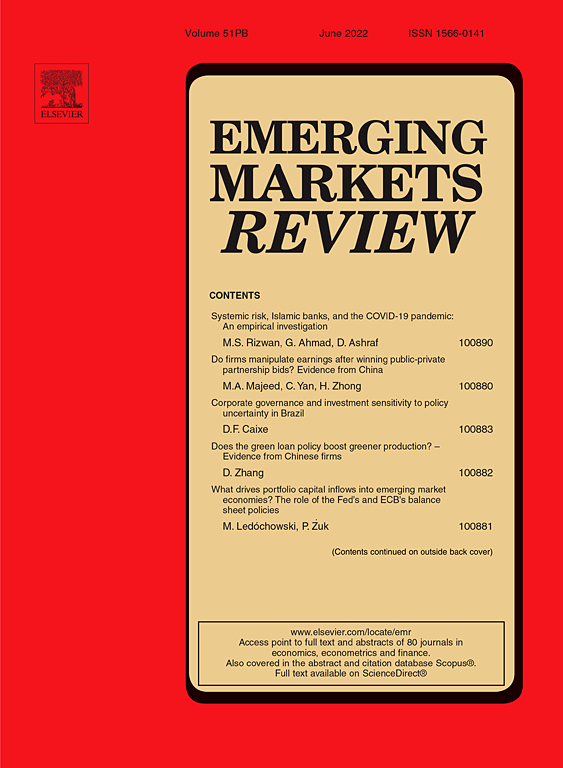EMERGING MARKETS REVIEW
Published:
Classification JEL:
E59, F31, G14

The most recent
Juliana Jaramillo-Echeverri, Adriana Sofía Rodríguez
Gaurav Khanna, Carlos Alberto Medina-Durango, Anant Nyshadham, Daniel Ramos-Menchelli, Jorge Andrés Tamayo-Castaño, Audrey Tiew
Cesar Anzola-Bravo, Poveda-Olarte Paola
This paper examines the effects of foreign exchange (FX) communications on FX markets in Colombia and Mexico. Our estimations follow the calendar-time portfolio approach using daily data between 2000 and 2019 on exchange rates and known risk factors. We find an asymmetric effect of such communications: while there is strong evidence indicating that communications aimed at weakening the local currency affect the exchange rate level in the intended direction, there is no evidence of impact when examining communications intended to strengthen it. These results are consistent with fear of appreciation and with previous evidence from developed economies.


 Andrés Mauricio Sánchez-Jabba,
Andrés Mauricio Sánchez-Jabba, 